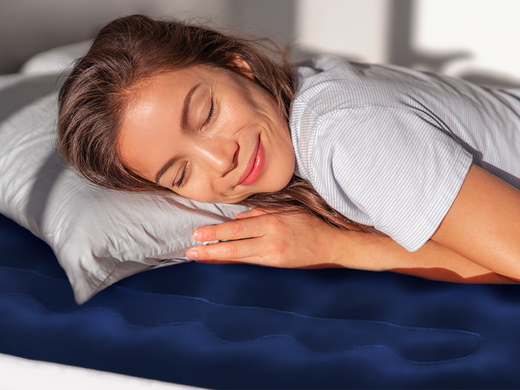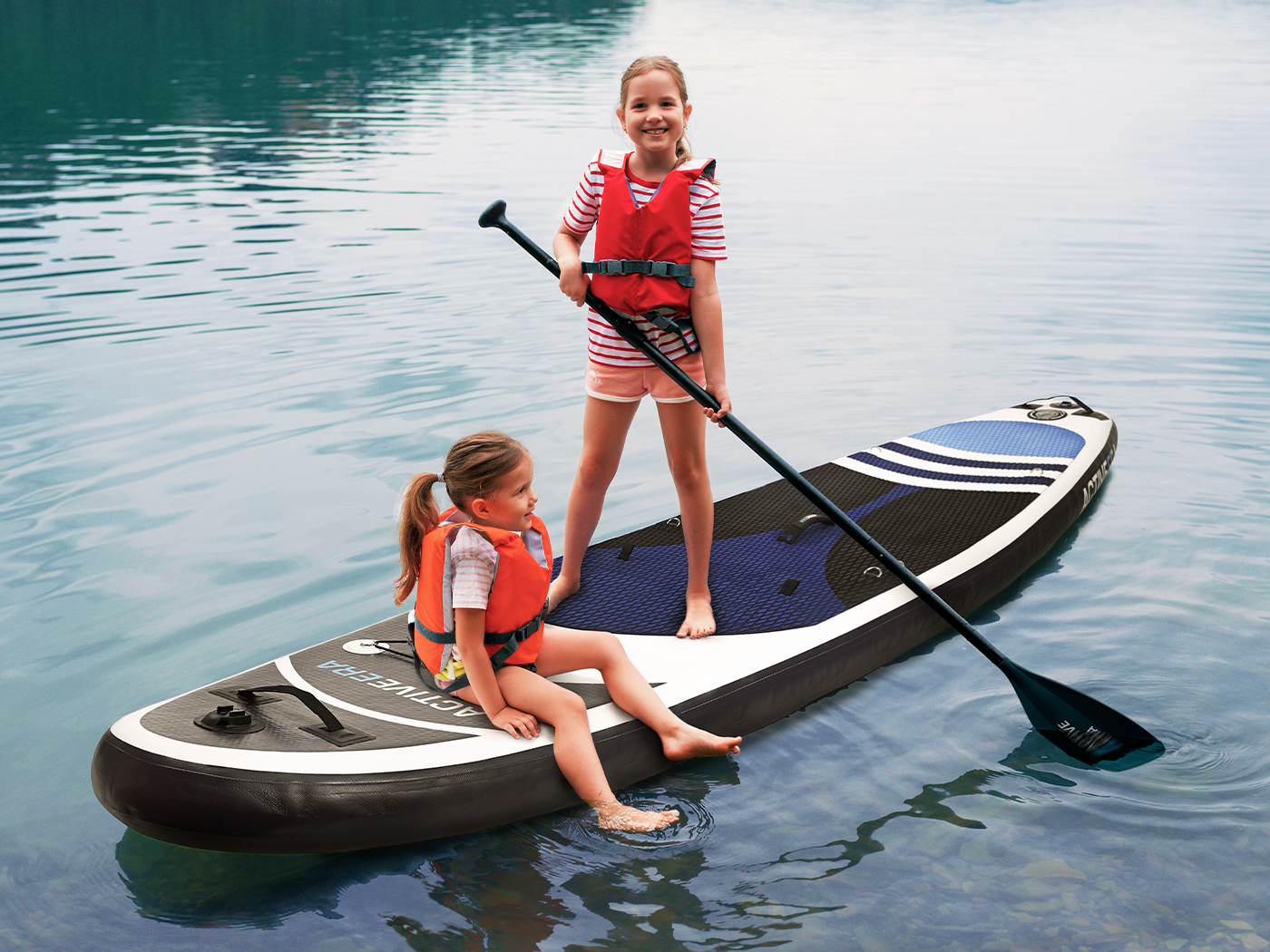The Beginner’s Guide to Paddle Boarding
New experiences are always exciting - tag us in your journey on Instagram at @ActiveEra, we would love to see you on your adventures.
Paddleboarding has been around for ages but has recently exploded in popularity and it’s not hard to see why. A hobby that allows you a new view of your watery surroundings, a full body workout and is super easy to learn? Sign us up! The basics can be mastered in no time, and your Stand-Up Paddle Boarding experience can easily be customised to your existing hobbies; yoga, fishing, you can even take your dog on your board with you. Here at Active Era we love new experiences and the outdoors, so we’ve put together some tips and tricks for you - here’s everything you need to know to get started on your new paddle boarding adventure:
How to choose a paddle board:
The Board
There are a few variables to consider when choosing a paddle board – the height and weight of the rider, their experience level, and where the board is going to be used.
As a beginner, the experts recommend you try an inflatable Stand-Up Paddle Board. These are ideal because not only are they easier to transport and cheaper than traditional models, they’re also durable and can be used for a variety of paddle board experiences. Inflatable boards are so great for beginners because they have uniform thickness all along the board which means extra stability for those of us just finding our sea legs. The round nose floats with the water, it doesn’t cut through it, so it should be a pleasant and less choppy ride.

The Accessories:

On to accessories; a vital piece of paddle boarding equipment that is often overlooked is the leash. When riding a paddle board you should always use a leash to ensure your safety and all good paddle boards should have one built in. Another aspect to consider are the fins on the underside of your board. As a beginner it doesn’t matter too much which fin set-up you go for, but as our goal is stability when getting started, it’s recommended to go for an option with three or four.

While these are the most important accessories, there are many more options you could factor in when choosing a paddle board. Would you like to document your journeys with a built-in camera mount, or should you consider a board with a removable seat? Some paddle boards can be converted into kayaks with very little effort. Two activities for the price of one, and as a beginner it’s nice to have the option to be seated comfortably in less stable waters.

These basic guidelines do vary according to what your paddle boarding purpose is – yoga, surfing, bird watching, fishing; there are many ways to paddle board but when beginning, we recommend an all-around board that will introduce you to the sport without breaking the bank.
How to get started:
The basics
Now you’ve chosen your board and are ready to join the world of paddle boarders, you need to learn how to start making waves – literally. We’ve found that the best way to get started is by mastering knee paddling.
First things first – make sure you’ve put your board in the water the right way round. The fins should be at the back so they can help grip the waves and keep you straight, having them towards the front will prevent you from controlling the direction of your board at all. The easiest way to learn how to find your balance and get comfortable on your board is by knee paddling. Kneel on your board and hold your paddle in front of you, perpendicular to the board to stabilise. Keep your body straight up when paddling, but when floating along and enjoying the sights, you can relax and lean your bum against your feet. When you feel stable, it’s time to start paddling! Reach forward with the paddle, plunge it in the water, and pull back. When you reach the front of your knees, pull the paddle out the water and repeat.

Standing up
Once you’ve mastered knee paddling, it’s time to stand up. Always start in calm, flat water, ensure your fins are not scraping the bottom of your chosen stretch of water and then row yourself away from the shore in your knee paddling position. When you’ve stopped, slowly, using one foot at a time, stand up. It really is that easy. To stay as balanced as possible, slightly bend your knees, keep your feet a shoulder’s length apart, and keep your core engaged. Don’t go for a surfer’s stance, you’ll lose a lot of your stability and topple over when you get moving.

It’s a fact of paddle boarding that you will fall off at some point, but when this happens it’s likely you’re not going at great speeds and will be able to just hop back on. When falling, try to fall to the side, so as to avoid any potential damage to the front or back of your board and keep your paddle away from your body.
Paddling
Now to get to terms with the second half of Stand-Up Paddle Boarding – the paddling. This step is pretty important for you to get going on your adventures! The most fool proof and basic technique is to use your paddle as a lever. Place one hand higher up on your paddle’s handle to act as the lever, and your hand that’s positioned lower down should be the pivot point. Never hold the paddle like a broomstick, with both hands on the shaft! Keep your hands on the paddle about a shoulder length apart, any closer and your stroke isn’t going to have any power behind it.

Make sure your paddle is the right way around and that when you put your paddle into the water, the blade enters the water sideways. You can then turn it slightly while pulling through so the maximum surface area is being pulled through the water. Once you’re up and moving, it’s time to decide where to go. To steer yourself forward, face forward and stand up straight. Keep your toes pointing forward. With your lower hand, stabilise the paddle and with your top hand, pull the top of the paddle towards your body so the oar part is as far away from you as possible. Plunge your oar back in and push the top of the oar away from you. To prevent yourself from going around in circles, do a few strokes on one side and then a few on the other side. When you switch sides, you’ll reverse hand positions.
That’s all there is to it! We hope you enjoy Stand-Up Paddle Boarding just as much as we do, stay safe and active and most importantly – have fun.






